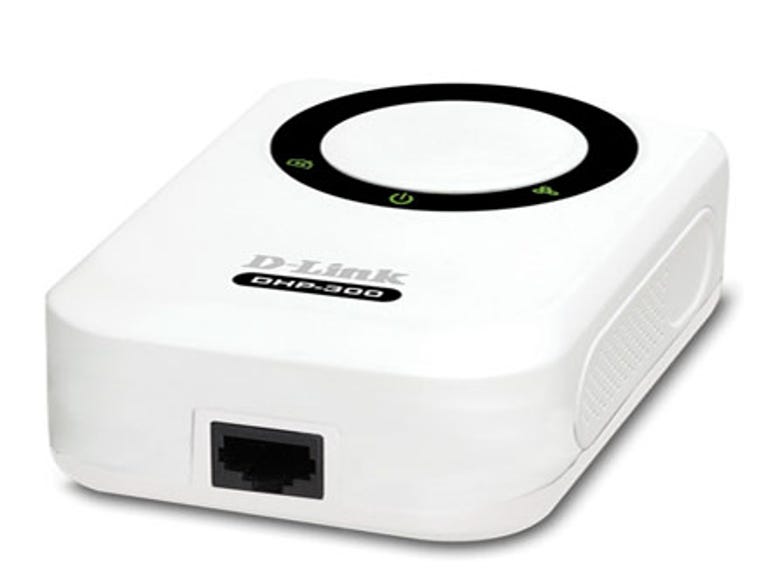 Why You Can Trust CNET
Why You Can Trust CNET D-Link DHP-300 review: D-Link DHP-300
D-Link's take on HD powerline adaptors manages to look a lot better than the competition, but the same old network performance woes bring the whole package down.
Design
Networking over your home power lines is an attractive concept -- there's no drilling, no insidious networking waves to be picked up by your neighbours, and adding a network port is as simple as plugging something in. The latest crop of power-based networking products -- models such as Netcomm's NP200AV and Netgear's HDXB101 Powerline HD -- add the very promising cherry of HD video streaming capabilities, putting them well ahead of the wireless networking crowd. You can add D-Link to that group with its claimed 200Mbps-capable DHP-300 Powerline HD Ethernet Adaptors.
The Good
The Bad
The Bottom Line
Before seeing the DHP-300 in action, we would have said that there was little you could do with the basic power plug design to make it attractive, but we'll give them their due -- D-Link's given it a really good shot. Admittedly, the plugs themselves are still huge and unwieldy, and you'll either have to employ a double adaptor or give them a wall socket to themselves in order to fit them into most household environments. Still, the basic white style and ring of icons (for power, connectivity and network transmission respectively) does make for a chunky power brick that's at least not quite as stark as either Netgear's similar all-white HDXB101 or Netcomm's bloated purple NP200AV Homeplugs.
Features
The key offering of the DHP-300 isn't different from at all from its competitors. It gives you an ethernet port wherever plugged in with a claimed top data rate of 200Mbps, more than enough for the transmission of HD Video, or even just for pinging data files around awfully fast. For the paranoid (or those living in apartment blocks where the location of wiring may be difficult to ascertain), encryption and data prioritisation utilities are provided for Windows platforms only.
Installation of the DHP-300 is as simple as its competitors. You plug it in where you need the network port, and use standard ethernet cable to connect it up. You need at least two DHP-300s to form a network; D-Link sells a two pack labelled as the DHP-301 for those purposes.
Performance
The performance of powerline networking equipment is always highly variable; as an example, one CNET editor (who shall remain nameless) isn't a big fan of powerline networking as he consistently fails to get more than a couple of Mb/sec out of any powerline equipment. Other editors do much better, so take our figures with a large grain of salt, and keep hold of your sales dockets. We tested two DHP-300s in a simple network configuration to give the units the best possible fighting chance of hitting the near-mythical 200Mbps target, and commenced file transfers to get some real-world transfer examples.
We'd grown used to being disappointed by the hype surrounding 200Mbps powerline, and sadly, the DHP-300 wasn't the unit to dissuade us from this view; across a battery of tests with a variety of file transfers, the top speed we managed was a paltry 19.7Mbps, which isn't enough for solid HD video streaming. It's still relatively fast for home networking -- for reference, the same tests using 802.11g networking across the same machines got us no faster than 6Mbps -- but well below what's commonly claimed for this kind of equipment. Critically, it also performed much slower than Netcomm's less visually attractive purple 200Mbps AV Homeplugs. D-Link's offering is marginally cheaper, but it's also around half the speed in our test environment.
It's also worth noting that like Netcomm's and Netgear's offerings, the DHP-300 forms its own network and doesn't play well with others. In our tests, we were unable to get any of the three to see any other competing adaptor on a simple powerboard, although they'd all happily see their "own" make quite easily. Simply put, if you invest in any of them, your investment is stuck within the one brand.
Ultimately, the D-Link DHP-300 scores well with us for bringing the price of Powerline HD equipment down, but it's a pity that, at least in our test environment, it's brought the speeds down as well.



